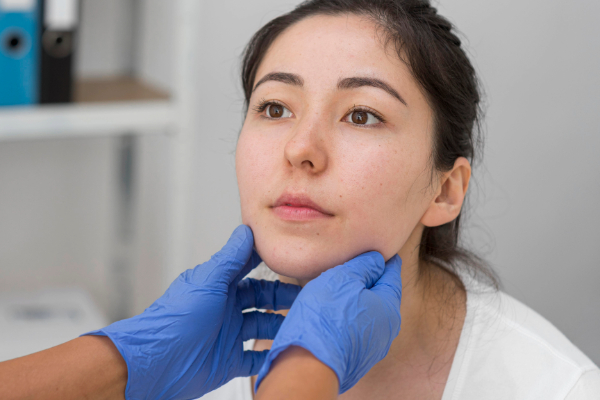
Botox has long been associated with smoothing out wrinkles and enhancing facial features. However, its benefits extend far beyond cosmetic enhancements. The treatment is also known for addressing various medical conditions, including temporomandibular joint disorder (TMJ), a muscle disorder predominantly affecting the jaw.
Read on as we explore a little more about TMJ and how Botox as a treatment can help alleviate the symptoms:
Understanding TMJ
Temporomandibular joint disorder, known as TMJ, refers to a range of symptoms affecting the jaw joint and surrounding muscles. This usually includes jaw pain, stiffness, clicking sounds and difficulty chewing – significantly impacting those who suffer with the disorder’s daily life.
How Botox Works for TMJ
Botox’s multipurpose muscle-relaxing properties make it a valuable tool in treating and relieving TMJ associated symptoms. When injected into the muscles around the jaw with expert precision, Botox can temporarily block nerve signals that trigger muscle contractions. By relaxing these muscles, the treatment can alleviate tension and reduce the pain and discomfort associated with the disorder.
The Benefits
Aside from the physical relief, one of the key, and rather spectacular advantages of using Botox for TMJ treatment, is its minimally invasive nature. Unlike surgical solutions, Botox injections are super quick, virtually painless and require no downtime, allowing patients to resume their daily activities immediately.
It’s also proven that Botox injections can help prevent involuntary teeth grinding or clenching, often linked to TMJ (which can also prevent future dental problems in the future such as tooth wear and fractures).
What To Expect
When it comes to using Botox for TMJ treatment, the procedure differs slightly from its commonly known cosmetic application. Before starting the treatment, our professionally trained dental practitioners will provide a detailed explanation of the procedure and address any questions or concerns you may have. During the session, Botox injections are administered directly into the muscles surrounding the jaw joint. The process is swift and usually causes only minimal discomfort, often described as a pinprick sensation. Post-treatment, you may notice some minor bruising or swelling of the injected area, but these effects typically diminish within a few days.
The main difference between dental Botox treatment compared to its cosmetic purpose lies in the targeted areas of injection and the intended outcome. The dosage and placement of injections vary between the two applications to address specific symptoms and achieve optimal results, but overall, the process is fairly similar.
The Results
Many patients experience significant improvements in their TMJ symptoms within days to weeks after receiving Botox injections. As the muscles around the jaw joint relax, pain diminishes and jaw function improves, leading to a happier, more comfortable you.
The majority also enjoy long-lasting relief from TMJ symptoms following just one singular Botox treatment. Additional treatments may be necessary to maintain results depending on the severity of the condition and individual response to treatment but don’t worry, our dental professionals will assess your progress and recommend further treatment as needed to ensure ongoing relief from TMJ.
While Botox can provide considerable relief for TMJ symptoms, it’s crucial to approach the treatment under the guidance of a qualified healthcare professional. At the Family Dental Clinic, all of our dental practitioners are clinically trained to administer Botox injections for both cosmetic and therapeutic purposes. However, we always advise consulting with your GP to determine if it’s the right option for you.
If you’re considering Botox for TMJ relief, schedule a consultation at the Family Dental Clinic today to discuss your options and determine the best course of action for your needs.
Contact our Chichester dental practice today at 01243 771171.